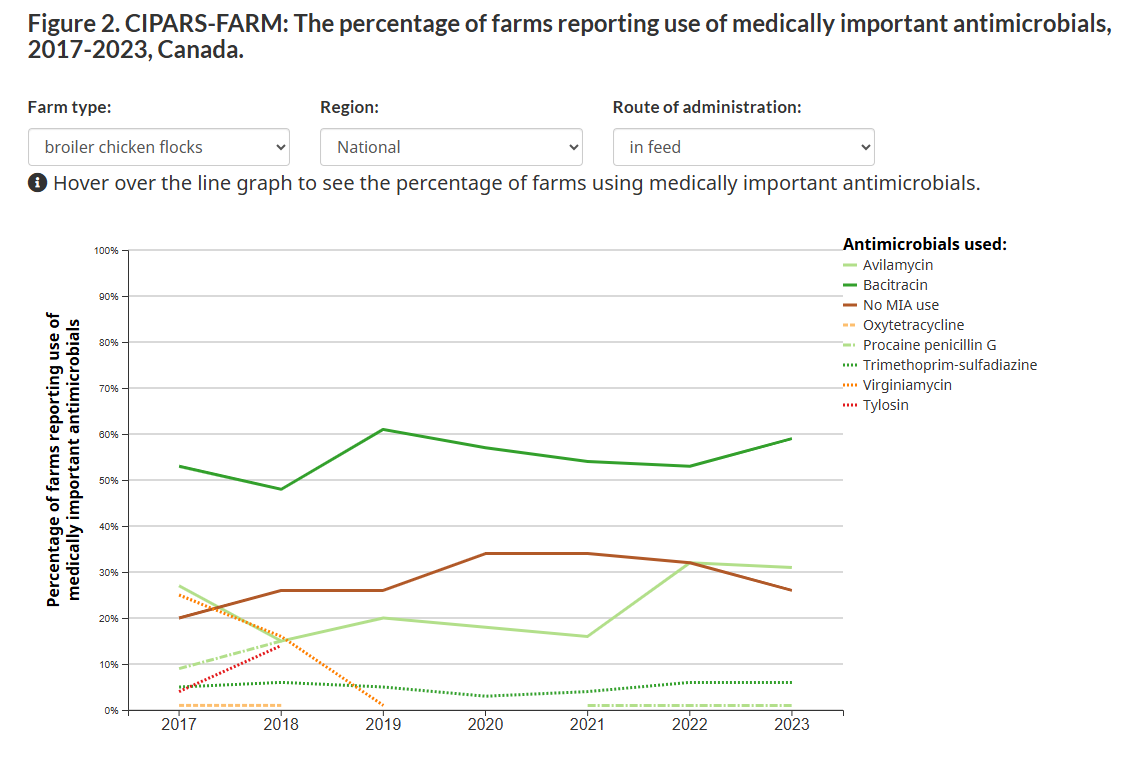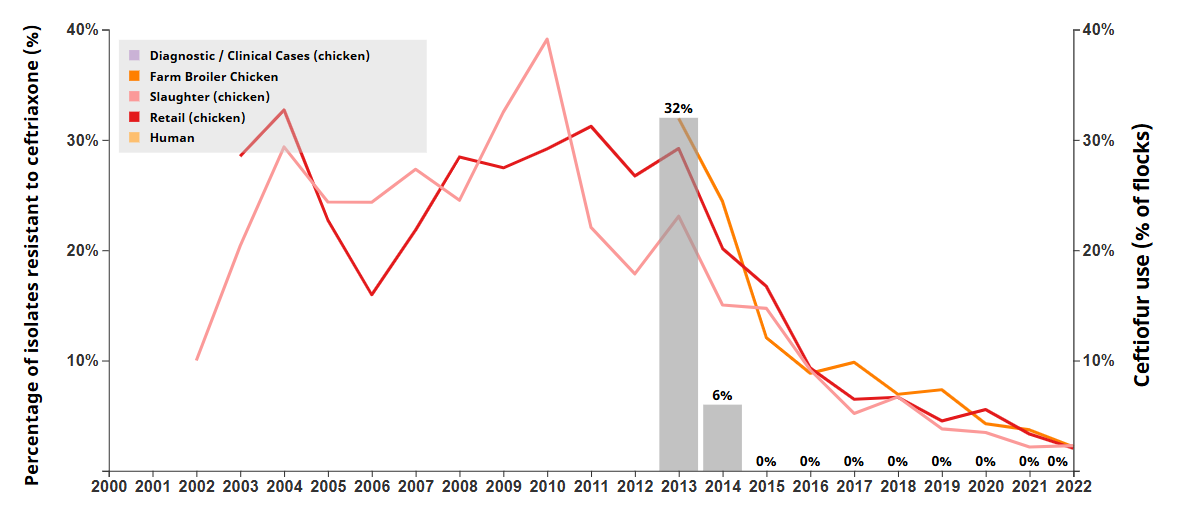


 Français
Français


Chicken Farmers of Canada’s (CFC) Responsible AMU Strategy helps to ensure the continued success and growth of our great sector. CFC’s Strategy delivers a sustainable means of:
With chicken being the number one protein consumed by Canadians, the Responsible AMU Strategy plays a major role in producing food that Canadians can trust. The strategy works in collaboration with the federal government’s Pan-Canadian Action Plan on Antimicrobial Resistance, with similar foundations of stewardship, surveillance, research, and best management practices.
Following the elimination of the preventative use of both Category I and II antimicrobials, CFC has been taking a non-regulatory approach to further antimicrobial use reduction, with a focus on the preventive use of Category III antimicrobials.
Recent activities
CFC convened a focus group of members from across the supply chain to explore options and opportunities for Category III reduction within a non-regulatory approach. Nutritionists, vets, farmers, researchers and representatives from the hatchery, processing, and pharmaceutical sectors met several times to share knowledge and experiences, developing recommendations of ways to move forward. These recommendations included increased communications to farmers, vets, and nutritionists, working with the Federal government to increase access to alternatives, stewardship of Category III antibiotics, and improved management throughout the supply chain. CFC is evaluating the recommendations and determining the best path forward to implementing these.
Improved access to probiotics and other animal health products remains a priority so that reduction of antibiotics can be done while maintaining bird health and welfare. To this end, CFC has been working with the Federal government to find efficiencies in the approval process for new products to come on the Canadian market.
CFC is also considering Health Canada’s new proposed categorization of the importance of antimicrobials. This categorization of antimicrobials is based on the relation of their importance to human health. This is important as the CFC Responsible AMU Strategy has been developed by focusing on reducing use of those most important antimicrobials to human medicine (Category I, II, and III). Avilamycin (previously uncategorized) is proposed as a Category III antimicrobial. Since Health Canada had previously indicated that Avilamycin was important to human health, this antimicrobial has been considered in CFC’s initiatives to reduce the preventive use of antimicrobials.
Current usage and resistance trends
The Canadian Integrated Program for Antimicrobial Resistance Surveillance (CIPARS) of the Public Health Agency of Canada (PHAC) monitors antimicrobial use and resistance (AMU and AMR) across Canada. Their online dashboard is a great tool for visualizing the results of their surveillance work on both AMU and AMR. The dashboard includes data that is summarized nationally or by region, but it can still be useful to see overall trends and compare with usage on your own farm.

CIPARS reports that ~60% of antimicrobials used are not important to human medicine1. The graph above shows the percentage of flocks, as a national average, that reported medically important antimicrobials (Category I, II, or III) used in feed. Bacitracin (BMD) has consistently been the most frequently reported, and in 2023, Avilamycin (Surmax) was used in just over 30% of farms sampled. About 27% of flocks surveyed reported no use of Category I, II, or III antibiotics.
CIPARS has demonstrated reductions in antimicrobial resistance in targeted bacteria and has pointed to CFC’s Responsible AMU Strategy as a major factor for this reduction2. The graph below shows the success of the 2014 elimination of the preventive use of Category I antibiotics (usage is at 0% after 2014), and the correlation with decreasing levels of resistance in E.Coli isolates.

Next steps and what you can do
The Canadian chicken sector has been very successful in reducing Category I and II use – which required innovation in management practices to advance bird health and welfare. And there is always more to learn, and new things to try.
CFC will continue working with government to increase access to animal health products, and to advance the next recommendations for the Responsible AMU Strategy.
Farmers are encouraged to talk to their veterinarian and nutritionist about antimicrobial use on the farm; explore why certain antimicrobials are used, for how long, and for what purpose. Discuss ideas for AMU reduction that will work for your specific situation, ask fellow farmers what works for them, and be sure to check out the Farmer Resource Portal for lots of articles, videos, and case studies on different aspects of broiler management.
References

